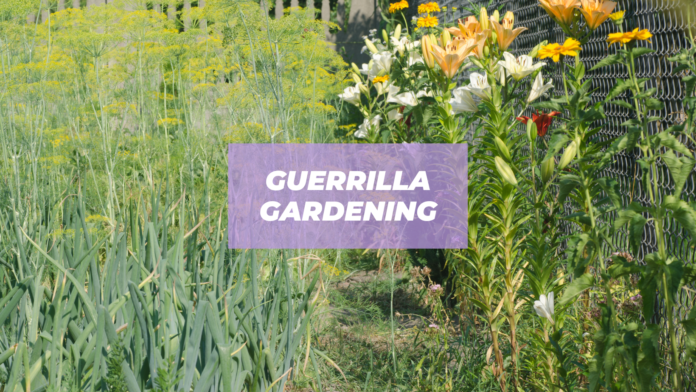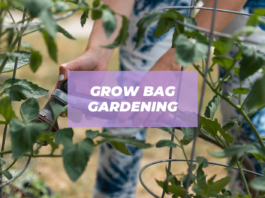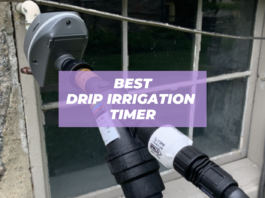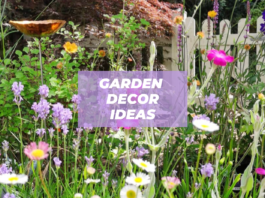This post may contain affiliate links, which means that I may receive a commission if you make a purchase using these links.
Don’t have your own garden? No problem. Guerrilla gardening takes gardening out of the backyard and into neglected urban and suburban spaces.
I lived in the city without access to my own garden for many years. (Now I know there are alternatives like container gardens.)
It was around this time that I was learning about herbs and foraging, and I long to get my hands in the dirt and grow some plants of my own.
Luckily, it was also around this time that I learned about guerrilla gardening, which opened up my world to the possibilities of growing plants without your own garden. The practice of guerrilla gardening satisfied my budding green thumb while also revitalizing neglected urban areas in my neighborhood.
Guerrilla gardening is a very rewarding practice that helps to combat urban decay. I hope you try it out, and maybe create your own community of gardening bandits!
Hi, I’m Leslie!
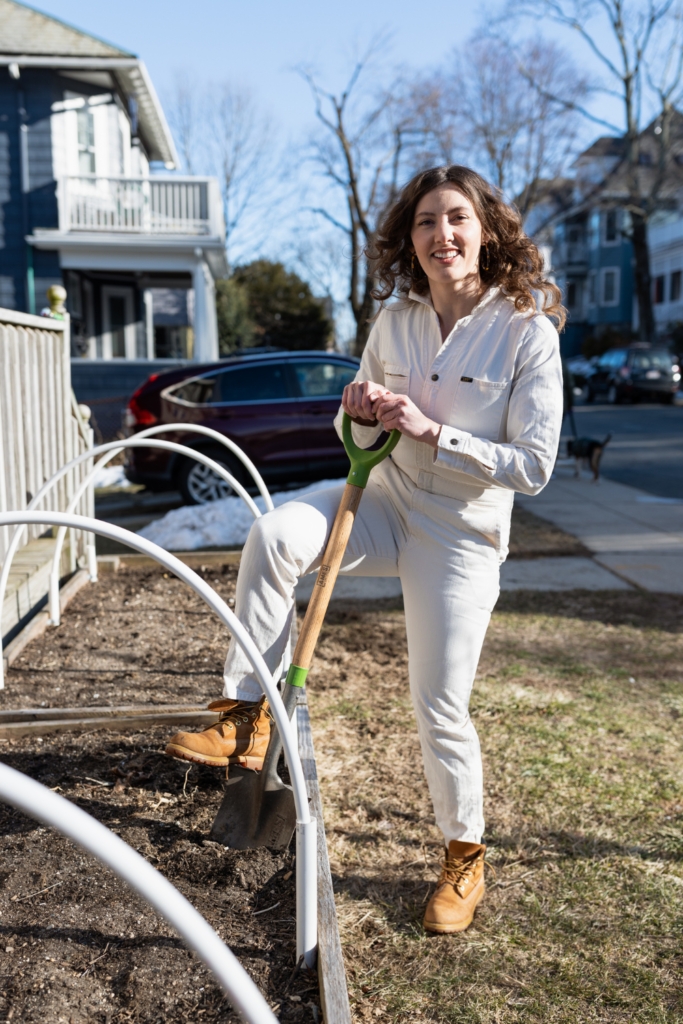
My name is Leslie, and I’m the founder of PunkMed! On my blog, I and my team share my info, experiences, and recommendations in the area of sustainability, urban homesteading, and gardening. Our goal is to make it less overwhelming for you to live a fun and sustainable life!
I’ve been guerrilla gardening for almost 10 years now, and I’m so excited to share my top tips! Let’s get into it!
This post is all about guerrilla gardening.
What is Guerrilla Gardening?
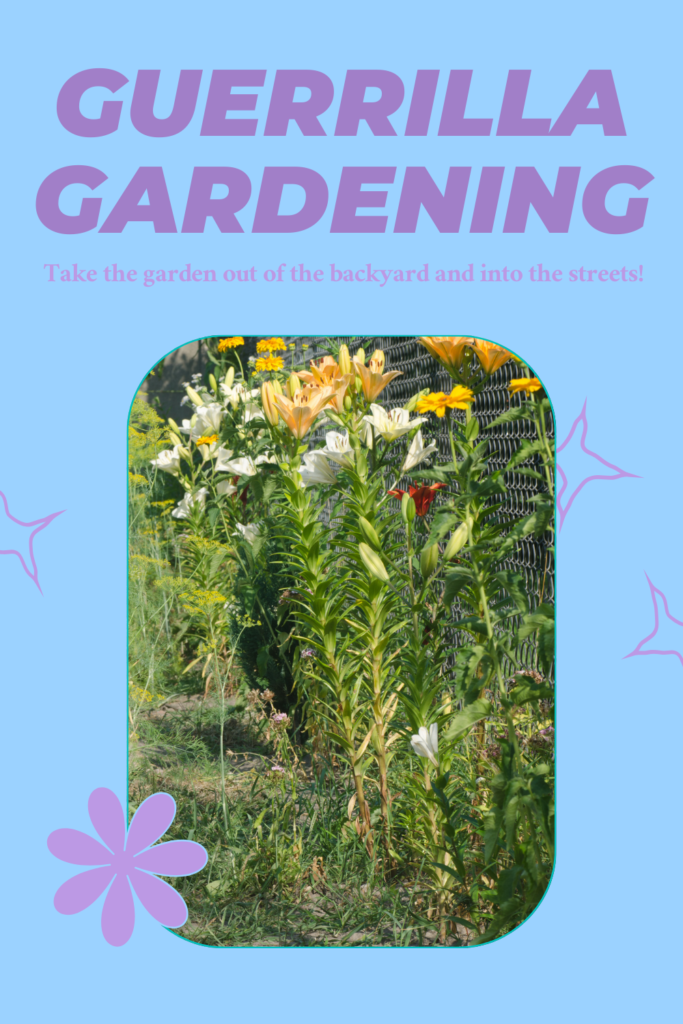
Guerrilla gardening gets its name from ‘guerrilla warfare’, a military tactic that involves ambushing the opponent, typically used by smaller rebel groups.
Guerrilla gardening is much more peaceful, but it does involve some sneakiness.
Guerrilla gardening is the practice of growing plants in vacant lots, highway meridians, and other neglected urban and suburban areas. Basically, it’s gardening on land that you don’t own. Many see guerrilla gardening as a form of activism that rehabilitates otherwise abandoned spaces lost to urban decay.
Indeed, while this practice is usually not authorized (hence the “guerrilla”), there are ways to go about it that are pretty harmless and fun. While guerrilla gardening ideas below are pretty hands-off, I still recommend getting permission beforehand. Always guerrilla garden wisely.
Benefits of Guerrilla Gardening
There are many benefits to starting a guerrilla gardening practice, or even a collective:
- Beautification of Urban Areas: Guerrilla gardening can transform neglected or unsightly urban spaces into green areas, adding beauty and vibrancy to neighborhoods.
- Community Building: It fosters a sense of community ownership and pride as neighbors come together to improve shared spaces.
- Food Production: Guerrilla gardens can grow fruits, vegetables, and herbs, providing fresh produce to local communities, especially in food deserts where access to fresh produce is limited.
- Environmental Benefits: The addition of green spaces helps to improve air quality, reduce urban heat islands, and provide habitat for wildlife, contributing to biodiversity conservation.
- Promotion of Local Food Systems: By growing food locally, guerrilla gardening supports local food systems and reduces reliance on long-distance transportation and the global food supply chain.
- Fostering Resilience: Guerrilla gardening can help communities become more resilient to economic downturns or food shortages by promoting self-sufficiency and community cooperation.
- Political Activism: In some cases, guerrilla gardening is a form of political activism, challenging property laws and advocating for access to green spaces in urban environments.
Best Plants for Guerrilla Gardening
The best plants for guerrilla gardening will always be plants that are native to your area. Native plants are naturalized to the climate of your region, and will be able to grow with minimal intervention or watering.
If you don’t know which plants are native to your area, I recommend visiting your local nursery to ask which seeds grow best in your area without watering.
Native plants will also provide the proper habitat for local beneficial insects, particularly pollinators, and other wildlife. Plus, using native plans ensures you are not introducing invasive plants to the area.
Still, the common choices for guerrilla gardening that provide shelter for beneficial insects include:
- Mustard
- Buckwheat
- Fennel
- Dill
- Clover
Wildflowers for Guerrilla Gardening
- Echinacea
- Yarrow
- Goldenrod
- Sunflower
Guerrilla Gardening Ideas
Seed Balls
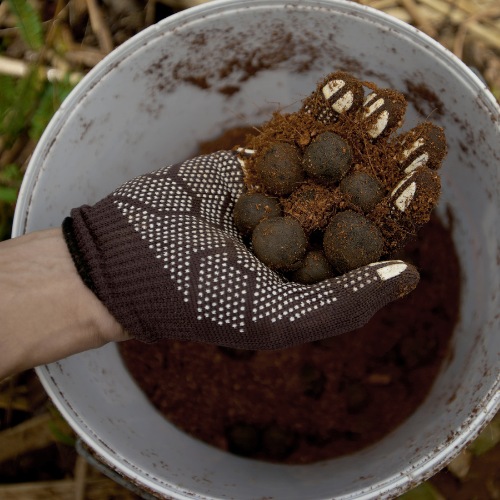
Seed balls are a fun and easy guerrilla gardening project. While the concept of using seed balls for planting is not entirely new, the idea has been embraced by many guerrilla gardeners.
Seeds balls are simply a mixture of seeds, compost, and clay that is packed tightly into smalls balls and allowed to dry. Then, the portable balls can be thrown in the nearest abandoned lot or neglected urban space.
Eventually, rainfall will re-hydrate the dried ball of clay, freeing the seeds and allowing them to germinate and grow. (Again, make sure to use native plants that will be able to thrive without your intervention!)
I love using wildflowers for seed balls! Wildflowers are sure to make any space more attractive, and they will provide food and shelter for pollinators. I think this pollinator mix from High Mowing Seeds would be a fabulous choice for seed balls!
See below for my foolproof seed ball recipe. This is such a fun project to do with friends, and even makes a great party favor!
Materials for Seed Balls
- 5 parts dry red clay
- 3 parts dried out organic compost (I like Coast of Maine compost)
- 1 part seeds of your choice (I like this pollinator mix)
How to Make Seed Balls
- Mix on part seeds with three parts compost.
- Add five parts dry red clay to the seed/compost mixture.
- Add a little water slowly to the mixture, until it becomes a dough-like consistency.
- Shape the “dough” into marble-sized balls.
- Let the seed balls dry out on a cookie sheet in a shaded place for a couple days.
- To distribute, throw about ten balls per square yard of a ground.
If you’re not ready to make your own seed balls, there are a few options that you can buy pre-made online. Again, make sure you are buying those with seeds that are compatible and native to your area!
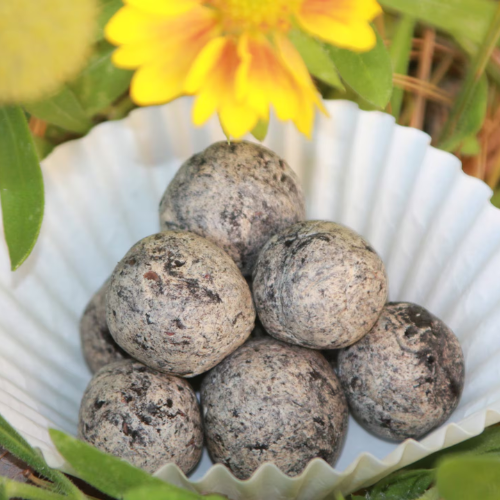
I love these Bee Seed Bombs from D’s Seeds and Blooms, as they contain wildflowers that are native to most of the U.S., including echinacea, anise hyssop, and purple prairie clover.
This post was all about guerrilla gardening.
